Updated 7 months ago
Comparing battery backup options: whole-home backup, solar generators, and UPS’s
Written by
Zeeshan Hyder
Battery backup can keep your devices running when the grid isn’t available. There are three main types of battery backup options:
Uninterrupted power supplies (UPS) are used for keeping very important items running if the grid fails, like a server. These are usually small and cannot power much more than a single device.
Solar generators are slightly more powerful. Solar generators are small, portable batteries that can be charged using portable solar panels and keep key devices like WiFi routers, phones, one or two lights, or maybe even a mini-fridge.
Home battery back up systems are large and can run multiple electrical loads like refrigerators, lights, outlets, sometimes even stoves or air conditioners, for 24 hours or more.
The right battery backup option for you depends on what you want to power and your budget.
Which type of battery backup is right for you?
Here are the most popular types of battery backup. Choose the right device based on your needs.
1. UPS (Uninterrupted Power Supply)
Used for: Short-term backup power
We’ve all been there: you’re finishing up an important task on one of your devices when the power goes out. Whatever it was - a work project, an online form submission, or maybe even a video game - the power outage resulted in loss of unsaved data, and along with it all of your progress, your momentum, and the time it will take you to get back to where you were. Or even worse, there’s a surge of power that fries the power unit in your device, rendering it useless.
Enter the UPS, which is short for Uninterruptible Power Supply. It offers surge protection to multiple devices, protecting them during storms and brownouts. In the event of a power outage, it will keep them on long enough for you to finish what you’re doing, save your work (or play), and safely shut down.
UPS’s are especially useful in protecting servers, which can suffer hardware damage and data losses if there is voltage fluctuation or a blackout. They have been serving this purpose for many years now, and have been a common feature in homes and offices since the 1990s.
With the passage of time, UPS’s have become smaller, more powerful and, best of all, cheaper. You can also find UPS’s designed for different sub-purposes, for instance a mini-UPS or router-UPS. These are smaller UPS’s designed specifically to backup your WiFi router. They have a small, unobtrusive form factor and generally provide up to four hours of backup for a stand router. This is an easy way to ensure uninterrupted internet access for your mobile devices and laptops during a longer blackout.
A UPS is best if you:
Are on a budget
Run a server and you want to protect yourself from hardware failure or data loss caused by a brownout or sudden shutdown
Work on a PC and you want to be able to save your work and safely shut down if needed
Want several hours of backup power for a single small device, such as a Wi-Fi router
2. Solar generators
Used for: Powering multiple appliances for several hours
Solar generators aren’t really generators at all - they’re actually portable battery storage systems. However, because they are used for the same purposes as traditional generators - that is, providing a steady source of backup power - the name ‘solar generator’ has stuck.
Solar generators offer a great deal of flexibility. In addition to being portable, they can be charged in many different ways:
With the provided solar panels (which are small and easy to set up)
Via a wall charger that that can be plugged into a regular wall socket
In some cases, via a charger that can be connected to a car’s 12V socket
There are other advantages that solar generators have over traditional diesel-powered generators. For one, they are completely silent. Furthermore, they usually come equipped with a large number of USB ports, 12V DC sockets, and 120V AC power outlets, making them a more versatile option.
Once fully charged, solar generators offer between 0.5 kilowatt-hours (kWh) and 2 kWh, depending on the size and model. Battery backup of 0.5 kWh will allow you to run small emergency items like a modem, lights, and small fans for several hours. With 2 kWh of battery backup, you have a couple of options: power the aforementioned small emergency items for as long as a day, or you can opt for a few hours but with additional things like a fridge and TV on, as well.
Just note that if you want to use your solar generators for home backup power - as opposed to their typical outdoor uses - you’ll need to connect it to your electrical panel via a generator transfer switch, same as you would with a traditional diesel-powered generator.
Your other option is to simply carry the solar generator to where you want to use it.
A solar generator is best if you:
Want to run and charge multiple appliances, as well as charge devices for several hours during a blackout
Need a portable solution than can be carried around the home, and even used for camping or other outdoor activities
Learn more: The pros and cons of solar generators
3. Whole-home batteries
Used for: Powering your house for hours, or even days
A whole-home battery is a battery system that’s capable of powering an entire home. They are designed to handle high instantaneous power loads, meaning they can run several large appliances simultaneously. They also have large storage capacities, which enables continuous operation for many hours at a time.
Whole-home batteries are often called ‘solar batteries’, since it is most common to use them in conjunction with a solar panel setup. The reason for this is simple: when a solar battery is purchased with solar panels, it automatically qualifies not just for the 30% federal solar tax credit, but for a variety of state and other local incentives, too - most notably California’s SGIP rebate program.
In 2025, most people looking for the best home backup battery are looking at smart lithium battery solutions such as a Tesla Powerwall or LG Chem RESU. These battery products are small, efficient, and durable. This is especially true when you compare them to older battery technology like lead-acid batteries. (Lead-acid batteries do still have some use cases; we have an article comparing different battery types).
We should point out here that it is actually possible to get a solar battery without actually installing solar panels. You could, for instance, set up a LG Chem RESU to charge using grid power, thus providing you a backup option for when there’s a power outage. In 2025, a standalone battery with greater than 3 kWh of storage capacity can qualify for the 30% federal tax credit. However, without solar panels, you’ll have to charge the battery with expensive grid power (instead of cheap solar power), and you won’t be able to charge your battery in the event of a prolonged power outage.
A whole-home battery is best if you:
Are going to buy solar panels, or want to pair the battery with an existing solar setup
Live in an area prone to frequent blackouts and want a clean backup option that can power your entire home
You want to use the battery to avoid expensive peak electricity rates
You want to replace a loud and dirty gas generator
The best battery backup products to consider
The table below shows our top recommendations for each category of battery backup. Scroll down to see a short review of each product.
Type | Product | Storage capacity | Cost* |
|
|---|---|---|---|---|
UPS | APC Back-UPS BE600M1 | 600 VA | $89.99 | |
UPS | CyberPower CP1500PFCLCD | 1500 VA | $238.00 | |
Solar generator | Jackery Explorer 500 | 396 Wh | $499.99 | |
Solar generator | Goal Zero Yeti 1400 Lithium with WiFi + Boulder 100 Briefcase Solar Kit | 1,425 Wh (1.4 kWh) | $2,199.95 | |
Solar generator | Point Zero Energy Titan 1000 solar briefcase generator | 2,000 Wh (2 kW) | $5,645 | |
Whole-home | 9,600 Wh (9.6 kWh) | $8,000 | ||
Whole-home | 10,000 Wh (10 kWh) | $9,500 | ||
Whole-home | 13,500 Wh (13.5 kWh) | $9,200 |
*All prices for whole-home batteries are before installation and incentives
Best UPS’s
There’s not a whole lot to differentiate the different UPS’s on the market, but here are two products from two leading UPS brands that caught our attention.
1. APC Back-UPS BE600M1
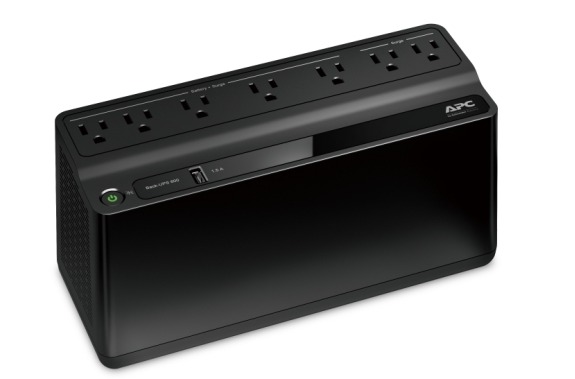
Image source: APC
Best: Budget
Price: $79.99 Buy Now (Amazon)
Key features: Small form factor, seven 120V sockets, 1.5A USB port
Capacity: 330 watts / 600 VA
This is a wallet-friendly model from APC, which is one of the top manufacturers of UPS’s. Users are happy with its low price, compact size, how it’s lightweight, and its good socket layout. It also has an easily replaceable battery.
The 600 VA won’t give you a ton of backup power, but it’s enough to allow you to safely wrap up your work and shut down your PC. It works silently, without the annoying beeps that you sometimes hear from cheaper UPS’s.
Five of the seven sockets are also surge protected, which means that this unit offers a cheap way to protect your electronics.
A minor quibble to be aware of: some users also complain that the LED power indicator is too bright, making the unit unsuitable for a bedroom.
All said, this is a good option if you want a cheap UPS for the house.
2. CyberPower CP1500PFCLCD
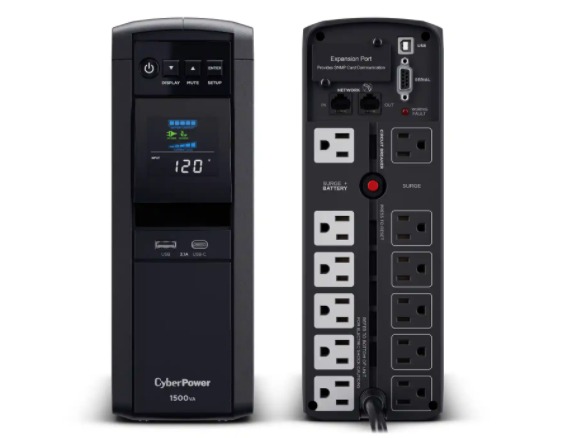
Image source: CyberPower
Best: Power use
Price: $219.95 Buy Now (Amazon)
Key features: Sine waveform, 12 120V outlets, Type A & C USB ports (3.1A shared)
Capacity: 1500 VA / 1000W
CyberPower is another established player in the UPS market. The CP1500PFCLCD is aimed at power users, and it looks the part: it’s got a large, mini-tower form factor, with a prominent colored LCD display on the front.
On the back it features 12 sockets, half of them connected to the battery and the remaining ones simply surge-protected. It also adds ethernet line protection, a handy extra.
At 1500 VA, it offers more than twice the backup power of our budget option. Even more impressive, when tested by the NYTimes Wirecutter team, it was found to put out 930 watts, which should be enough to handle even the biggest home office or home entertainment setups.
Best solar generators
Here are the solar generators we recommend to our readers.
1. Jackery Explorer 500
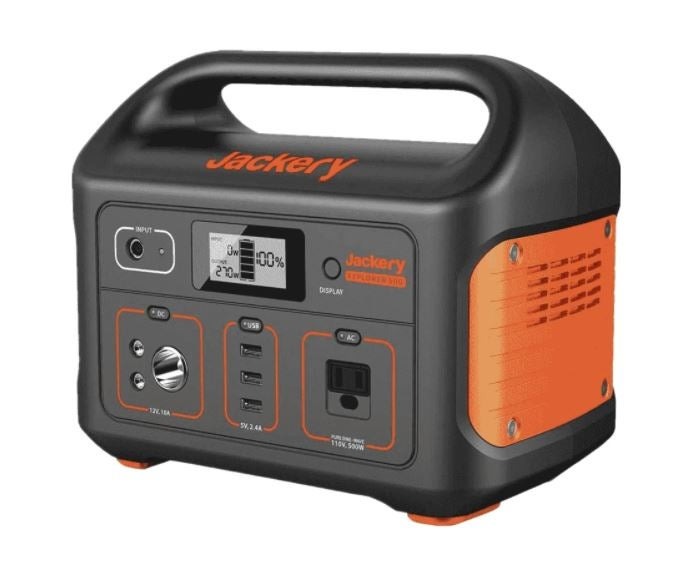
Image source: Jackery
Best: Value
Price: $499.99 Buy Now
Key features: Very powerful despite its small size, ideal for traveling, serves as a great emergency backup power supply
Capacity: 518 Wh
The Jackery Explorer 500 is an all-in-one solar generator that’s a great option if you’re looking for something that’s small and portable.
It includes a high-quality, pure sine wave inverter, as well as an MPPT charge controller to ensure your battery recharges safely. Its compact size makes it great for traveling. Not only is it great for camping and boating trips, it is a great emergency backup power supply, as well.
When paired with a 100-watt solar panel, the Explorer will charge in 9.5 hours. The portable power station includes three USB ports, an AC power outlet, and a 12 volt car charger. It also has an LCD display to help you monitor the charge and discharge status of your battery pack.
2. Goal Zero Yeti 1400 Lithium with WiFi + Boulder 100 Briefcase Solar Kit
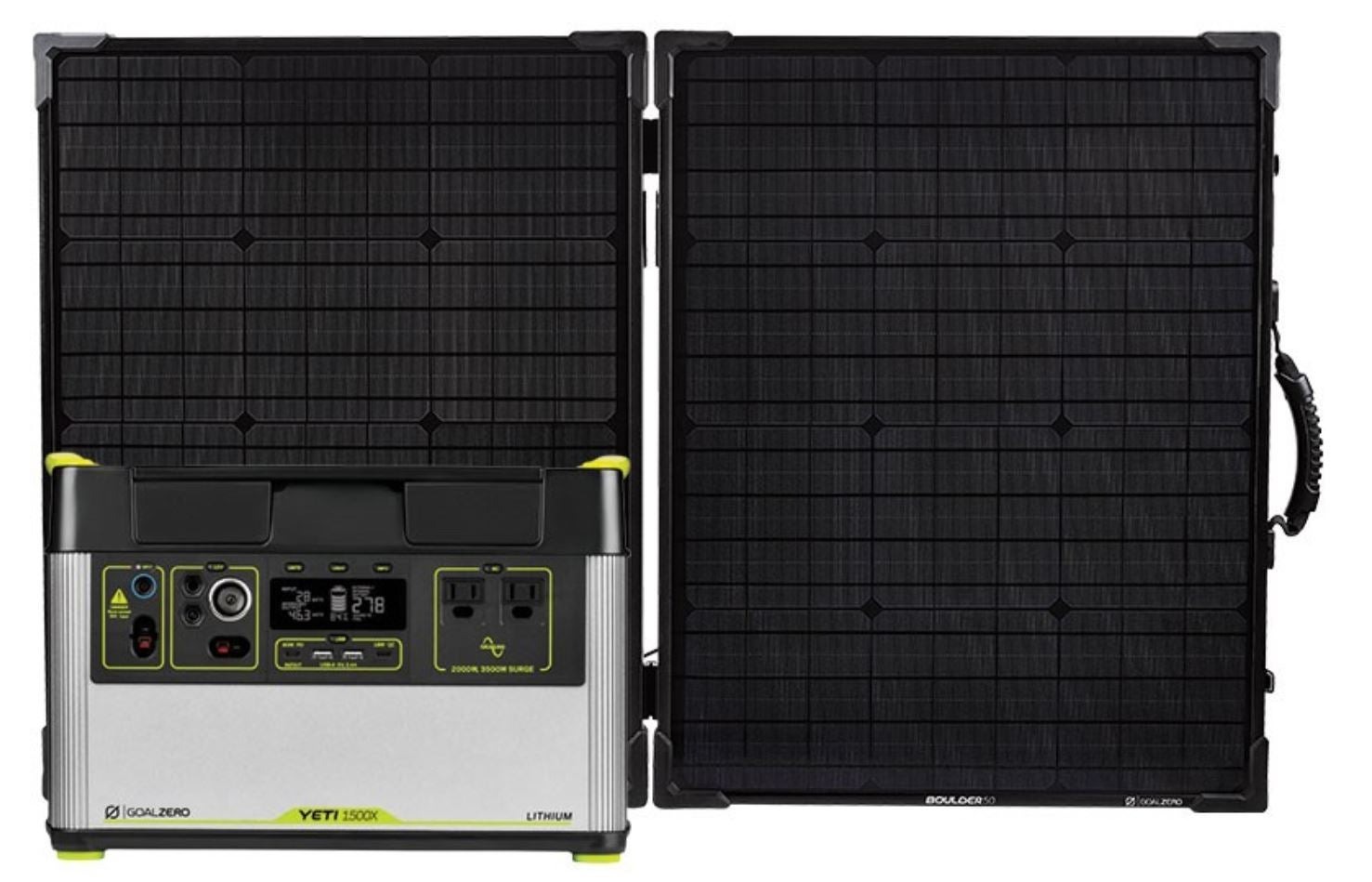
Image source: Goal Zero
Best: Overall
Price: $2,199.95 Buy Now
Key features: Lightweight, can be charged by solar panels or wall outlet, includes an app that helps you monitor your energy use
Capacity: 1,425 Wh
Goal Zero is one of the most popular solar generator manufacturers around. Their Yeti 400 is a great choice if you’re looking for something to back up your home in the event of a power outage. It has 10 total ports that guarantees you’ll be able to power all of your devices. It can even power a fridge for 32 hours!
Despite having 1,425 Wh of storage capacity, the Yeti 1400 lithium ion battery weighs just 43.7 pounds. So besides being a great source of emergency power, it’s portable enough to be brought on long camping trips.
The Yeti 1400 can be charged using solar panels or with a wall outlet. A 100-watt solar panel is recommended if you will only be using about 10-20% of the energy stored within the battery. If you anticipate your power consumption to be more than 20%, consider getting additional panels.
You can monitor exactly how much energy you use from the battery with the Goal Zero app when you are connected to WiFi.
3. Point Zero Energy Titan 1000 solar briefcase generator kit
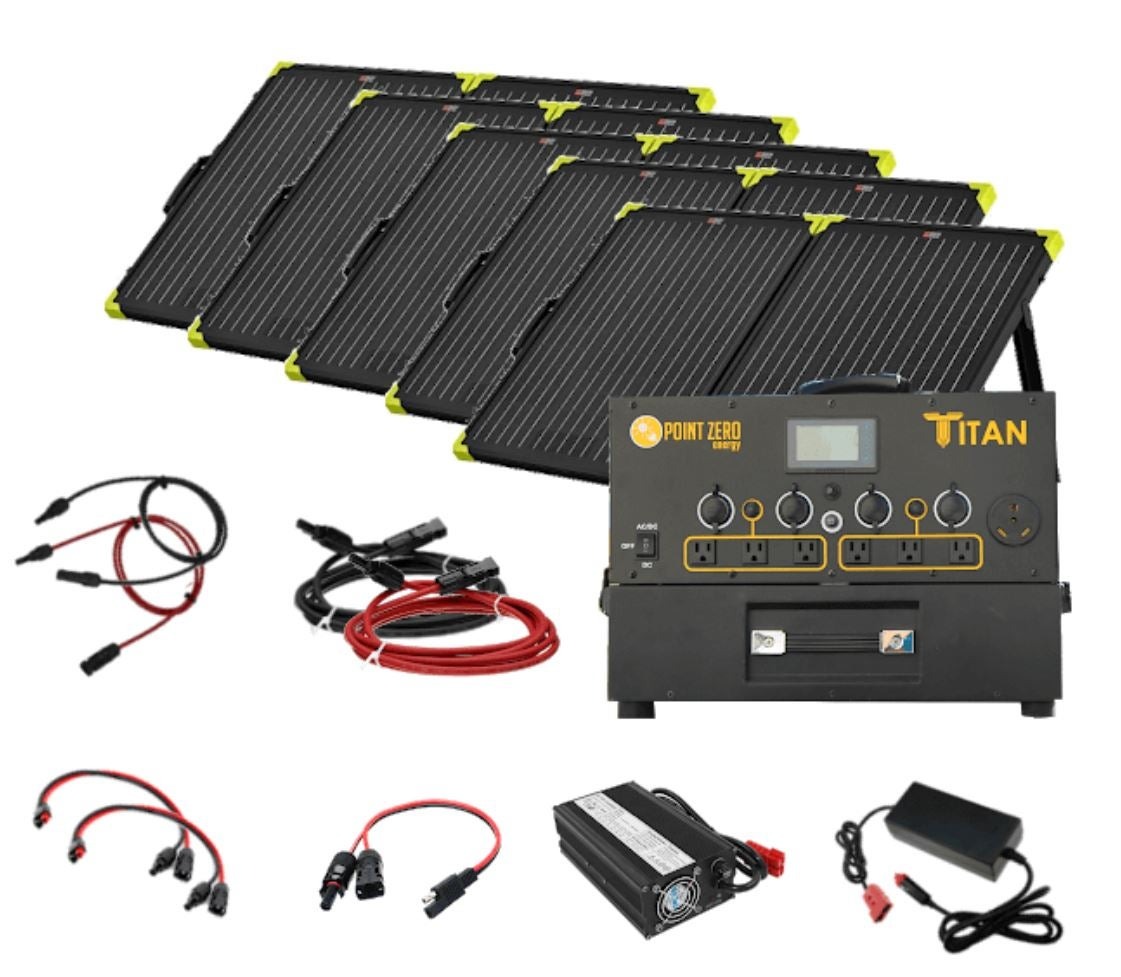
Image source: Point Zero
Best: For home power backup
Price: $5,645 Buy Now
Key features: Very powerful, includes built-in inverter and charge controller, foldable solar panels, high-powered AC output charger allows for quick charging
Capacity: 2,000 Wh
Point Zero Energy's Titan 1000 briefcase kit is a top choice among homeowners looking for emergency backup power due to its large size.
With 1,000 watts of solar panels and a battery capacity of 2,000 Wh, this is one of the most powerful portable solar generators on the market. It also includes a built-in inverter and charge controller. The Titan solar generator system can be paired with more batteries if needed.
The Titan solar generator has a maximum continuous discharge of 100A, or approximately 2500 watts. This means that it can handle large appliances such as a fridge or washing machine - but not an electric kettle or air conditioner. This means that the Titan is best suited to support critical loads in your house.
When the sun is out, the 1,000-watts of solar panels can run your electronic devices without draining the battery, and it’s able to charge in as little as 4 hours thanks to its high-powered AC output charger.
The Titan 1000 battery weighs in at 35 pounds and includes five foldable monocrystalline solar panels, so it can be used on the go but is also well suited as a home power backup system.
Best whole-home batteries
1. LG Chem RESU Prime battery system
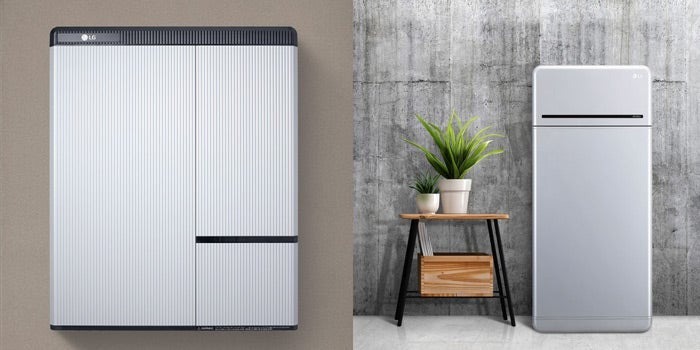
Image source: LG Energy Solutions
Best: DC-coupled battery
Price: $11,000 to $15,000 installed
Capacity: 10 & 16 kWh
The LG Chem RESU battery is a lithium-ion battery that captures solar energy and stores it for later use in residential settings. In 2021, LG Chem introduced new higher-capacity RESU Prime batteries in order to serve the needs of the marketplace affected by power outages and to more directly compete with Tesla.
The LG Chem RESU Prime can be used as either whole-home backup during outages or as a day-to-day battery pack, meaning it charges and discharges over a traditional 24-hour period.
The RESU Prime comes in capacities of 10 and 16 kWh, and can be installed in pairs to create whole-home backup for even larger homes that use a lot of electricity.
LG’s RESU Prime batteries come with a warranty that ensures they will retain at least 70% capacity after a 10-year period, which matches the warranty offered by both sonnen and Tesla.
The average cost of the LG Chem system, including supporting equipment and installation, ranges from $11,000 to $15,000 - depending on your location, battery capacity, and installation charges.
LG Chem batteries are DC-coupled and can only be used for backup with a central string inverter or by adding an additional battery inverter, which adds expense and complexity to the installation. That said, DC-coupled batteries are more efficient than their AC-coupled counterparts, such as the Tesla Powerwall.
2. sonnenCore battery
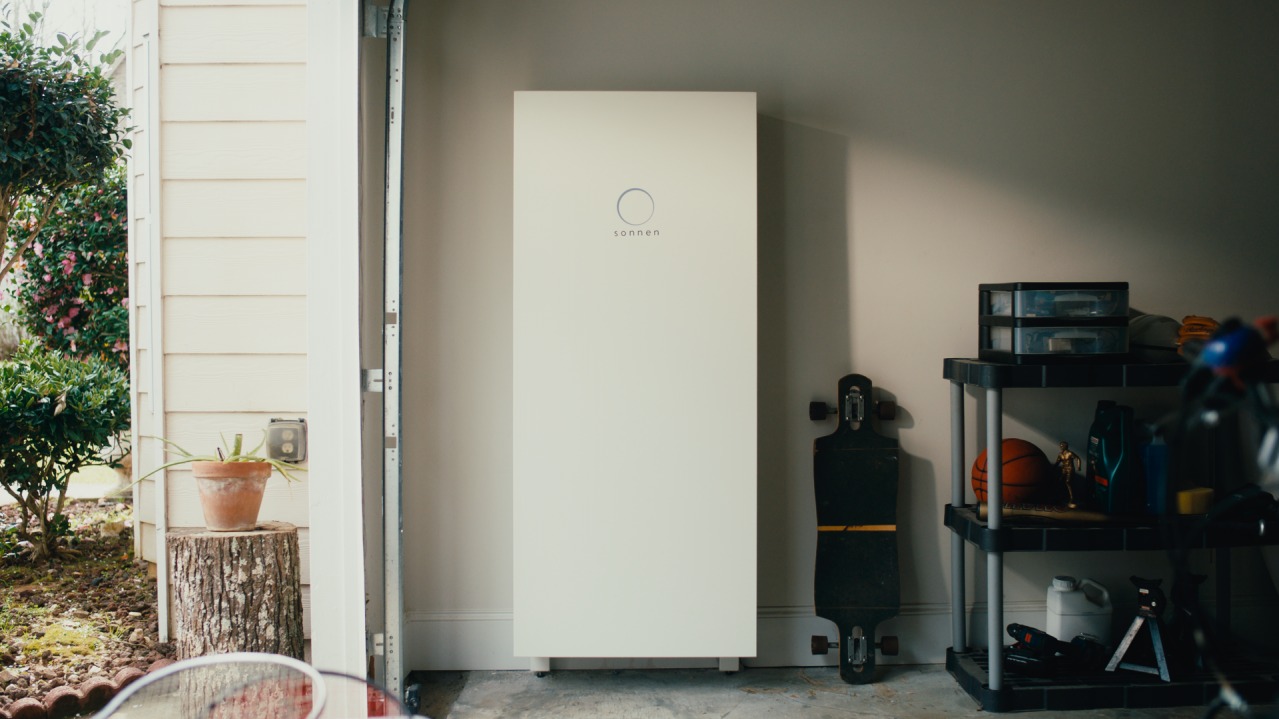
Image source: sonnen
Best: Tesla Powerwall alternative
Price: ~$11,500 installed
Capacity: 10 kWh
German energy company sonnen (yes, the s isn’t capitalized) has been making commercial batteries for a while. With the release of the sonnenCore, they are targeting the U.S. residential storage segment.
The sonnenCore is an all-in-one battery storage system that offers 10 kWh storage. It’s an AC-coupled battery, which brings it into direct competition with the current market leader, the Tesla Powerwall.
Its big selling point is that it uses lithium iron phosphate (LiFePO4) battery technology, which is safer and better for the environment. This puts it at an advantage over the Powerwall, which uses the more common lithium nickel manganese cobalt chemistry.
The sonnenCore currently costs $9,500 before installation. This is substantially cheaper than their sonnenEco or EcoLinx models. However, this puts it behind the Powerwall, which boasts a large storage capacity and a lower overall price.
sonnen offers a 10-year warranty that ensures the battery will maintain up to 70% of its storage capacity over a 10-year lifespan; this is pretty standard for solar batteries.
3. Tesla Powerwall
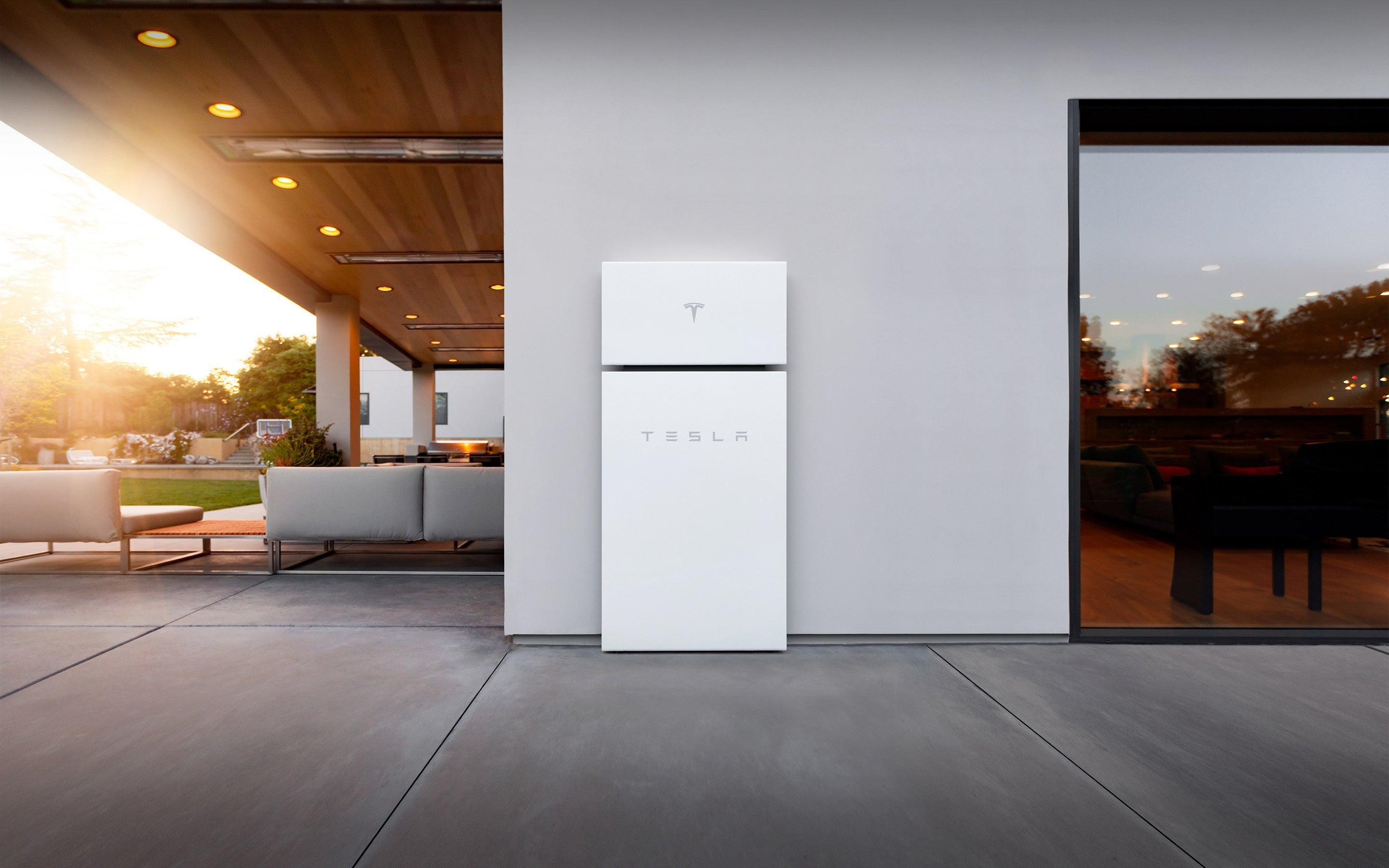
Image courtesy of Tesla, Inc.
Best: Value
Cost: $15,500 installed
Capacity: 13.5 kWh
At the time of its release in 2015, the Tesla Powerwall was a revolutionary step forward: it was the first lithium battery that was both powerful and affordable enough for mainstream residential use.
Since then, other companies, including the aforementioned LG Chem and sonnen, have released competing products that are relatively similar in quality and price. The Powerwall, however, remains the most widely-installed battery backup for home use.
The current variant, Powerwall 3, comes with a 13.5 kWh usable capacity. Its lifespan is pretty standard for lithium-ion batteries - it will operate at 70% of its original capacity after 10 years.
The Tesla Powerwall costs $8,200 for the battery, another $1,100 for the Tesla Gateway and accessories. Tesla's installation costs are about $6,300, bringing the final installation price of a Tesla Powerwall to $15,600.
But there’s a couple of downsides to be aware of.
The first is that it’s an AC-coupled battery. While this has its advantages (it’s very easy to retrofit a Powerwall to an existing solar power system) it also has a disadvantage, namely lower efficiency. That’s because the Powerwall receives AC power as an input, converts it into DC power for storage, and then converts it back into AC power as an output. Each time there is an AC-DC or DC-AC power conversion there is a small energy loss (DC batteries, which receive and discharge DC power, avoid this problem).
More importantly, the Tesla Powerwall is hard to purchase as a standalone unit. Nowadays the only way to get one is as part of complete solar installation from Tesla. Tesla has a poor track record with their past solar installations - as evidenced by their poor review scores - so it’s difficult to recommend them for this purpose.
Key takeaways
-
UPS’s are best for protecting electronics from voltage fluctuations and providing a bit of backup power to small devices.
-
The UPS’s we recommend are the APC Back-UPS BE600M1 (budget option) and the CyberPower CP1500PFCLCD (power option).
-
Solar generators are the most versatile battery backup option, offering portability, as well as several hours of backup power for multiple appliances.
-
The solar generators we like best are the Jackery Explorer 500, the Goal Zero Yeti 1400 Lithium, and Point Zero Energy Titan 1000.
-
Whole-home batteries (‘solar batteries’) are what you need if you want backup power for your entire home for hours, or even days.
-
The top three whole-home batteries to consider are the LG Chem Resu Prime, the sonnenCore, and the Tesla Powerwall.
Zeeshan is a solar journalist who has long been passionate about climate issues and developed a deep interest in solar power after witnessing its successful adoption in Australia. He has previously worked as a journalist for a major news organization, covering energy, climate, and environmental stories, among other topics. He also served as an organizer for the Pakistan Youth Climate Network, an advocacy group aimed at raising climate awareness...
Learn more about Zeeshan Hyder